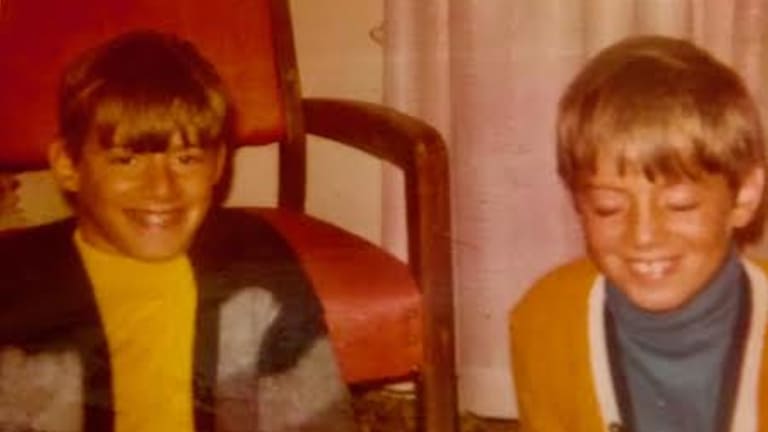As I immersed myself in tennis as a young boy, I couldn’t help but study it, devouring magazines and books. “Guess what?” I asked Ken one December afternoon as I turned the pages of World of Tennis ‘72. “Tomorrow is Julie Heldman’s birthday.”
Ken gave me the kind of bemused look older brothers tend to give a younger sibling. “You know,” he said, and then paused, “if you played tennis as much as you read about it or talked about it, you might be a good player one day.”
In this case, fact and truth were one and the same.
Our ritual continued following the 1976 US Open final, a compelling battle won by Jimmy Connors over Bjorn Borg. Off we headed to Barrington. If you play someone frequently, your senses take in so much of what’s projected by the person across the net. As Ken and I played that late Sunday afternoon, much felt very different. Besides making no quips inspired by Tony, Ken was distant, the texture of our match foggy. After the tennis, instead of going for a snack together, Ken asked if he could drive away by himself. Later that night, our parents had to bail him out of jail. There’d been a disturbing interaction. This was Ken’s first schizophrenic break. A month later, he entered a mental health center in nearby Westwood.
Over the next three years, a series of episodes rattled my family with the power of a 7.0 earthquake, a familiar catalogue for those who witness schizophrenia seize a young man: violence, anger, disconnection, accompanied by a roulette-like shuttle between home and hospitals, doctors and diagnoses, drugs prescribed with hope and Ken’s never-to-be-known treks into the night. Rapidly, it became clear that Ken was unable to live by himself or hold a job. By 1979, he began four decades of life in various facilities throughout Southern California—board and care, locked, assisted living.
At last, there came a moment when the harsh symptoms diminished, the illness tamed by medicine and time. But Ken remained stillborn. Our visits with him were jarring. For healthy families, there is the constant pace of forward movement, of the excitement and anticipation that attend a life lived in the healthy world—school, work, love, family, ambition, maturity, vacation, celebration, even death on its natural timetable. This was life in the sun, what we’d moved to California for, what tennis also personified.
To see Ken was to stare right into the moon. For my family, time was both now and then, life’s potential joy tempered by sorrow and pause. Surely, it could still be 1976 and perhaps what was about to happen didn’t have to happen, could be stopped from happening, was never going to happen. But it did. The day of the ’76 US Open final proved the last time Ken and I played tennis together.
Such is schizophrenia that time with Ken was often an experience in distanced dialogue. The snap, crackle and pop one often has in conversation with family and friends—like a lively rally with a familiar hitting partner—vanished amid the disease, the drugs that kept it at bay and the further mysteries of Ken’s wounded mind.
Once in a while, though, came a faint missive, as if from a distant planet. For a few years in the 1990s, Ken was still able to occasionally read. After he complimented me on a story I’d written, Ken said, “You’ve done well with all this tennis stuff. Just think, it wasn’t long ago that you were younger than me.”
I countered: “I still am.”
There indeed, Ken had articulated the difference between a fact and a truth.
That Ken died 30 minutes after September 3 began shook me to the bone. September 2 was the day my wife, Joan, died in 2010. To have these losses occur during the US Open is at once tragic and divine, an exquisite blend of grace and sadness.
On top of an armoire in my living room there sits a metal bin holding every media credential I’ve worn since 1995. Each is a reminder of the charmed life I lead, of trips taken, of the chance to occupy a passion first kindled in a living room watching the US Open, on slick Southern California hard courts tracking passing shots, over a shared bag of onion rings—and more recently, joined by fellow tennis aficionados on a road far more communal than the lonely one my first tennis superhero walked for so long. I hope now he finds peace and can once again splash in the pool.
